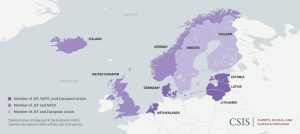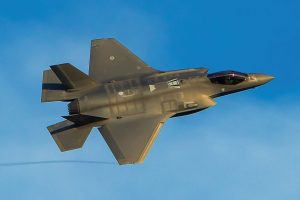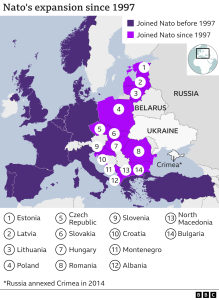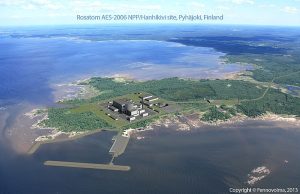Sweden’s history of neutrality started after the Napoleonic Wars. Following Napoleon’s downfall and the Congress of Vienna in 1815, Sweden never engaged in armed warfare ever since (except for peacekeeping).
During WWI and WWII, Swedes maintained strong cultural ties with Germany and economic relationships with Britain and France. At the same time, after gaining independence from Russia in 1917, Finland attempted to maintain its neutrality like Sweden. However, it was invaded by the Soviet Union in 1939. So, the Finns attempted to forge a military alliance with Nazi Germany in an attempt to thwart further Soviet attacks.
After WWII, Finland signed the Treaty of Friendship, Co-operation, and Mutual Assistance with the Soviet Union. Basically, Finland is committed to defending its territorial integrity against any threat. These security threats could either come from the USSR or NATO via espionage or border incursions. Throughout the Cold War, both nations did not align with the American-led NATO and Soviet spheres of influence. Instead, both countries provided humanitarian aid via the UN during the Congo Crisis and the Vietnam war. From the Cold War to now, these Scandinavian nations have taken many actions in modernizing their militaries and increasing cooperation with the West. Due to increased economic ties with the West and the Russian invasion of Ukraine, Finnish and Swedish leaders are now questioning whether to join NATO or remain non-aligned.
POST-COLD WAR ATTEMPTS AT NEUTRALITY
Although Finland and Sweden do not share a violent past with Russia, their foreign policies are clearly aimed to not provoke Russia and remain outside NATO’s military influence. Despite pursuing a balanced policy toward Russia, both nations frequently cooperate with NATO and EU members. For instance, the two neutral countries participate in the Nordic Defense Cooperation and the UK-led Joint Expeditionary Force.
Also, Finland and Sweden provided military and humanitarian aid to NATO-led operations and missions in Kosovo, Iraq, and Afghanistan. However, after Russia invaded Crimea in 2014, both countries maintained open relations and communications with Moscow. Finland does not want to upset Russia due to sharing an 800-mile border with the superpower, while Sweden does not technically border its large neighbor, it possesses an island that could be targeted by the Russian Navy. Overall, both nations have continued to maintain neutrality in spite of increased Russian aggression and NATO security measures.

CURRENT MILITARY CAPABILITIES
In the past few years, Finland and Sweden have excelled in modernizing its military capabilities. Both nations have announced increased defense spending at the wake of the Russian invasion of Ukraine. Despite having a population of only 5.5 million people, Finland has the largest military reserve in Europe and can mobilize nearly 300,000 troops in three days.
Last year, Finland decided to incorporate the American F-35 multirole fighters into its air force. This will transform the Finnish Air Force into one of the best and most elite air forces in Europe. Despite maintaining a miniscule military and its historical past of neutrality, Sweden has begun to reinforce its defense measures. The Swedish Navy and Air Force has bolstered its naval and air defenses. This occurred along with the Swedish government’s plan to raise the military spending from 66 million kronor (6.7 billion USD) to 91 million kronor (9.3 billion USD).

RUSSO-UKRAINIAN WAR’S INFLUENCE ON DECISION-MAKING
On February 24th, the Russian Federation initiated the largest war in Europe since WWII. Using the flimsy justification of “demilitarizing and de-Nazifying Ukraine,” Russian forces launched widespread air and ground attacks on various cities and bases in Ukraine. After withdrawing from Kiev, the Russian Army continues to advance in the southern and eastern regions of Ukraine. As a result, the invasion has resulted in at least 46,000 deaths, displacement of 13 million Ukranians, and $565 billion in property damage.

INCHING CLOSER TO NATO
Now, Finnish and Swedish leaders are heavily considering the invasion as a factor in whether to join NATO or not. First, these leaders have been considering NATO’s expansion since 1997. Since 1997, fourteen new nations (mostly former Eastern Bloc countries) have joined the military alliance. Before the invasion, Finland and Sweden maintained neutrality to avoid upsetting their large eastern neighbor. Now, 62% of Finns and 59% of Swedes want to join NATO as soon as possible.

By 2020, 50% of coal, 10% of electricity, and ⅔ of the oil and gas in Finland come from Russia. After the invasion, Finnish Prime Minister Sanna Marin confirmed that her government is not proceeding with the nuclear power project of Fennovoima. Fennovoima is a consortium in minority ownership of Russian-owned company Rosatom. Then, Marin addressed the public about the Finnish Parliament’s reevaluation of security measures and relations with Russia. Overall, many Finns and their leaders believe that NATO membership is the most viable option for the security of the country.

Sweden’s consideration of NATO membership has strongly been dependent on Finland’s moves. Due to not experiencing a war on home soil for the last two centuries, Sweden has closely monitored Finland since the Winter War of 1939-40. Former Swedish foreign minister Anna Lindh called for a more autonomous EU in terms of security measures. Last year, Sweden denied proposals for a rapid reaction force in the event of an EU member. With the invasion of Ukraine, more Swedish people and leaders are tightening their NATO ties. Earlier this year, Prime Minister Magdalena Andersson strongly emphasized increased cooperation with NATO and rejected Russia’s demands for NATO’s open-door policies. Recently, due to increased French interests in the Baltic region, Sweden joined the French-initiated European Intervention Initiative (EI2) and signed a treaty of defense cooperation. Also, Sweden’s military has received fighter aircraft, armored vehicles, and tanks from the UK and Germany. Overall, despite being hesitant in close cooperation with other NATO countries and the US, Sweden is observing the invasion closely and Finland’s situation to see if NATO is the best solution or not.
THE FUTURE
Finland and Sweden’s decision to either join NATO or maintain neutrality will have a profound impact on the future of European stability. The Cold War terms “Nordic balance” and “Finlandization” that describe Scandinavia as less militarized and less tense would end. As a result, Russia would take increased security measures on the border with Finland and strengthen naval forces in the Baltic Sea. At the same time, if Sweden and Finland join the alliance, then other NATO members must defend the two nations under the alliance’s Article 5. Also, these two nations could be threatened with nuclear obliteration due to many Russian leaders alluding to nuclear strikes if NATO continues to expand. Overall, Finland and Sweden are entering a dangerous era as the Russian military continues its invasion of Ukraine and threatens to rattle global stability.
